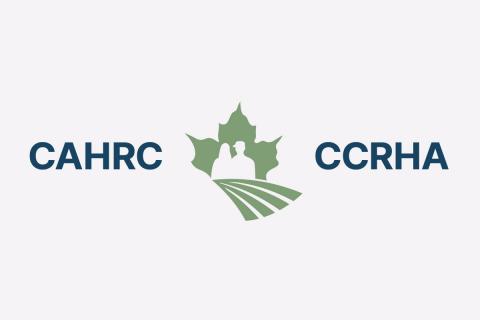To drive more young people to agriculture, educational opportunities and skill-building experiences must reflect the realities of the industry. We know this means showcasing and offering a diverse sample of the job prospects that exist and also ensuring that education and skill building are matched to current and future workforce demands.
In CAHRC’s report on work-integrated learning (WIL), we identify several ways to improve educational opportunities through on-the-job learning. Expanding on the opportunities to enhance education and skill development previously outlined in our research, our team has identified corresponding ways in which our organization can help drive optimal outcomes:
1 - To strategically develop work-integrated learning and experiential learning experiences related to the agriculture and food and beverage manufacturing sectors, CAHRC can work collaboratively with others in the sectors to:
• Target marketing and campaign materials to improve student participation in programs connected to areas where there are future needs in the labour market.
• Provide employers and students with tools and training to better understand and plan for opportunities and challenges related to WIL.
• Support development of mentorship and other tools that can help students get the most out of WIL opportunities.
2 - To support more interdisciplinary approaches at post-secondary institutions for WIL opportunities related to agriculture and food and beverage manufacturing, CAHRC can advocate to and support post-secondary institutions and employers to:
• Strengthen connections at post-secondary institutions between departments with programs connected to agriculture or food and beverage manufacturing and other departments such as business and engineering.
• Expand eligibility for WIL opportunities related to the sectors to enable students not in agriculture or food and beverage manufacturing-related programs to access opportunities.
• Ensure employers providing WIL experiences offer opportunities to develop transferable technical and soft skills.
3 - To improve access to experiential and work-integrated learning opportunities by increasing awareness of the benefits of working in the agriculture and food and beverage manufacturing sectors, CAHRC can:
• Increase outreach to K-12 schools to build awareness of the sectors.
• Enhance support for lighter-touch experiential learning opportunities such as hackathons to improve access for students not accessing WIL.
• Build on existing efforts and develop new strategies to enable better access to WIL opportunities for international students.
• Increase outreach and marketing to underrepresented student populations such as immigrants and Indigenous peoples.
• Enhance connections with Indigenous post-secondary institutions with activities related to the sectors.
4 - To Improve data availability and collection to better share work-integrated learning and experiential learning opportunities related to the sectors and assess program effectiveness, CAHRC can work collaboratively to:
• Work closely with stakeholders to create a database of WIL and experiential learning opportunities connected to the agriculture and food and beverage manufacturing sectors aligned with existing databases.
• Evaluate experiences by surveying students and employers following WIL opportunities.
• Connect with post-secondary institutions to develop a consistent approach for reporting on job opportunities and skills development connected to programs.
The bottom line is that improving the quality of our workforce will require greater collaboration between the post-secondary world and industry. CAHRC is well-positioned to play a convening role and be a bridge-builder between employers and educators. CAHRC is committed in its role to address all issues pertaining to the labour force and HR in agriculture.
Initiatives like the Growing Opportunities SWPP help employers maintain a viable workforce, attract new talent to the field, and build understanding and awareness of potential Ag careers. Through the efforts of CAHRC and the support of their partners, huge strides are being made to ensure a healthy future for agriculture across Canada.
